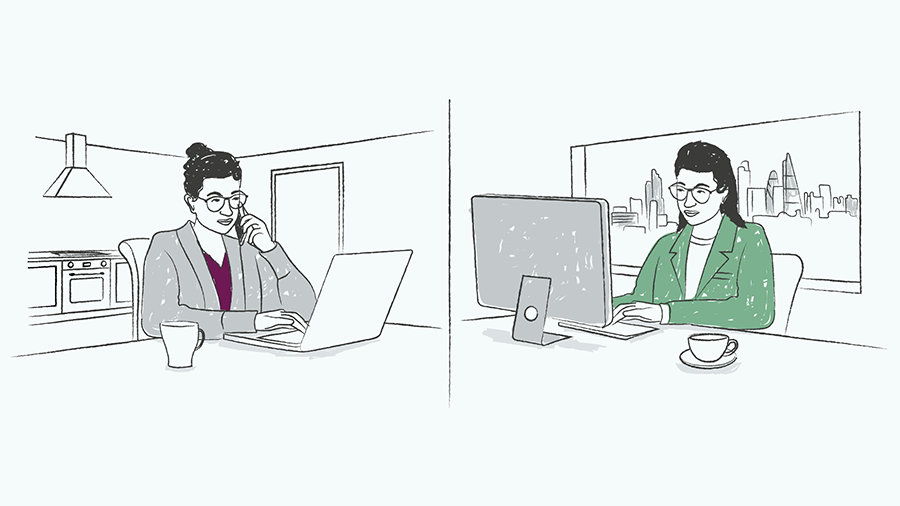
If you had to tell the economic story of the early 2020s through one object, you’d be hard pressed to beat a hastily-torn Amazon package. The tech giant posted sales of $332bn in the first nine months of this year alone, meaning it’s now 11 times bigger than it was a decade ago and is almost certain to become the world’s largest retailer within the next five years.
It was hardly the only company to benefit as lockdowns pushed even reluctant shoppers online. According to estimates by the Centre for Retail Research, digital sales reached 26.2% of all retail in 2020, up from 19.4% in 2019. Tech evangelists shared rather triumphant stories, meanwhile, about the pandemic accelerating the already inevitable triumph of ecommerce.
But this internet-conquers-all-eventually narrative has always been reductive. Yes, the long-term trend is for an increase in the share of purchases made online, but there isn’t some tribe of online consumers displacing a tribe of offline consumers – most people shop both ways, depending on what’s most convenient and enjoyable for them at that moment. Remember that even in the grip of the Covid-19 pandemic, physical was still the bigger channel.
The big uncertainty for businesses is which of the changes in consumer attitudes and behaviours that we’ve seen since 2020 will stick when it’s all over, and which will slide.
One of the most intriguing is hybrid working.
It was clear as early as summer 2020 that the future of work would involve neither the abandonment of the office, nor the return to the era of the Monday-to-Friday commute, but something somewhere in between. Sure enough, by November ONS figures indicated that 71% of working adults were travelling to work in a given week, five times higher than the proportion working exclusively from home, and the highest since the pandemic began.
What is still not clear is exactly how much time knowledge workers will spend in offices as organisations adapt to hybrid working. Most surveys indicate that the majority are coming in two to three days a week, but the situation is widely variable and still evolving.
This matters for consumer business planning because the more people are at home – and the more control they have over when they are at home – the more attractive online channels become.
You can get a sense of how attractive brands see different channels by what’s happening to advertising budgets. According to Group M, digital ad spend will have increased by nearly 40% in 2021, reaching record levels, while outdoor ad spend is still recovering from its precipitous drop in 2020, not predicted to reach pre-pandemic levels until 2023.
Offline opportunities
Having a large proportion of workers at home in the long run has implications not just for online channels, but also for how we reach them when they’re offline. We may never again see the same density of coffee shops in city centre business districts, but that doesn’t mean we won’t see them cropping up in suburbia.
While the CEBR predicts that persistent hybrid working could cost London businesses £234m a month, and Manchester businesses £48m a month, Barclays Corporate Banking reported that 18% of retail businesses with more than 10 employees were considering opening an average of five local or community stores each, meaning an extra 17,000 new premises across the country.
Aside from how often people commute, there is also the question of when. Anonymised data from O2 in September suggests that Mondays and especially Fridays are seeing far less travel than midweek days, with Soho for example seeing 25% more footfall on a Thursday than a Saturday.
This has obvious implications for pubs and restaurants, for example – if Thursday’s the new Friday, is Wednesday the new Thursday? – as well as for retailers.
“Businesses will really have to do their research into what are the new moments to capture consumers when they’re out and about. Does the school run become the new prime moment, or the weekend? The calendar of opportunities will change,” says Vogue Business head of advisory Anusha Couttigane.
Then there’s the question of who’s working where. Hybrid working isn’t demographically neutral – it only affects those in what were once called office jobs, which tend to be better paid than average, and are also geographically concentrated in London and other big cities. Even within that group, you’re more likely to find recent graduates choosing to come into the office on a given day than working parents juggling meetings and the school run.
All of this will need to be figured out by businesses trying to meet consumers on their own terms, but they can only do that once hybrid working settles into a new equilibrium. This may take years, especially if the virus itself continues to throw surprises our way, but the longer people work from home during Covid, the less likely they will return to pre-2020 habits – as workers or consumers – once it is over.
















